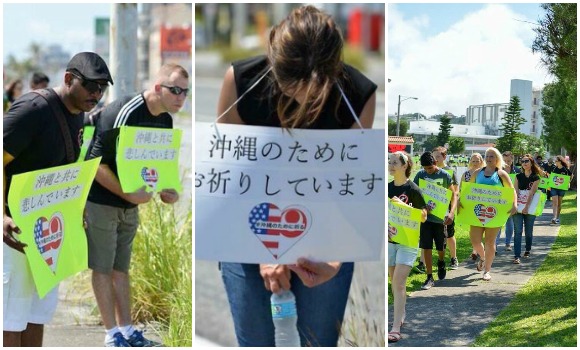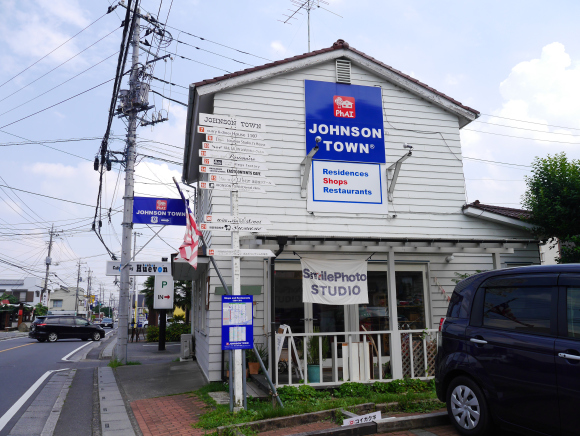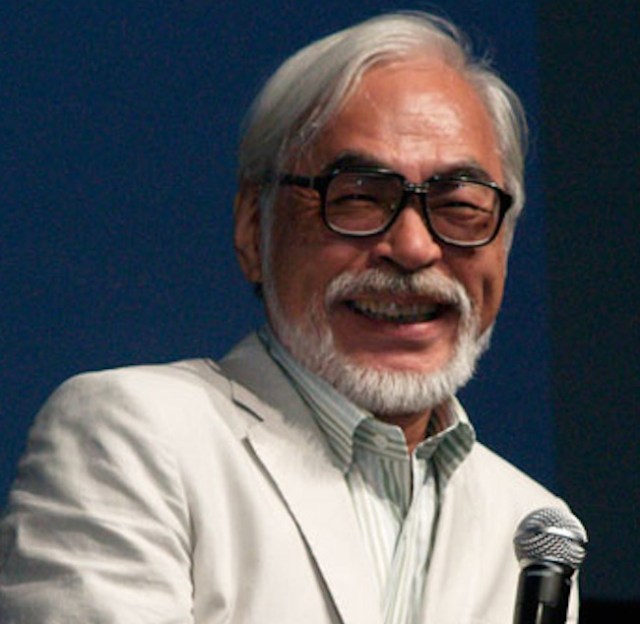U.S. military base
Groups of people moving to a new country often settle in the same area together, creating a little neighborhood reminiscent of their old lives in their new homes. In the U.S., we have a Chinatown or Little Italy in almost every big city, and Japan has the same thing too. They even have something you may have never heard of: Little America towns that used to house U.S. military personnel.
But what happens when the military decides they don’t want to live there anymore? Then you get a place like Johnson Town in Saitama Prefecture, where you’d swear you were walking around rural America, if not for the fact that it’s entirely populated by Japanese people.
What is one of these Little America towns in Japan like? And, most importantly, do they have good American-style food? A reporter from our Japanese sister site went to investigate and bring you all the answers, some of which may surprise you.
Internationally renowned Studio Ghibli co-founder and director Hayao Miyazaki, who announced his retirement from feature films in September of 2013 but is now reported to be working on a computer generated animated short, pretty much attracts attention for whatever he does or says. And while it’s nothing new, this time, it’s Miyazaki’s anti-war and anti-military statements, and not his animated works, that have recently been making headlines on the Japanese internet, especially as he referred to Japanese Prime Minister Shinzo Abe in his statements, and not in a positive light.
In an incredibly sad turn of events, a group of men who identify with those who oppose the presence of a U.S. base in Okinawa turned their anger towards a Japanese-American six-year-old girl late last month, allegedly shoving her to the ground and demanding to know, “Why are Americans in a place like this?”
As this attack could be qualified as a hate crime, you might be wondering why you haven’t heard more about this. Well, the reason could be just as shameful as the attack itself.




 Japanese beef bowl chain Sukiya’s 2026 Smile Box lucky bag basically pays for itself
Japanese beef bowl chain Sukiya’s 2026 Smile Box lucky bag basically pays for itself Hayao Miyazaki says Happy New Year to Studio Ghibli fans with new art for Year of the Horse
Hayao Miyazaki says Happy New Year to Studio Ghibli fans with new art for Year of the Horse We revisited Sweets Paradise after a decade to see if Japan’s dessert buffet still delivers
We revisited Sweets Paradise after a decade to see if Japan’s dessert buffet still delivers Japan’s oldest largetooth sawfish in captivity back on display in Mie Prefecture
Japan’s oldest largetooth sawfish in captivity back on display in Mie Prefecture Harajuku’s new permanent Tamagotchi shop is filled with cuteness and a surprising lack of poop
Harajuku’s new permanent Tamagotchi shop is filled with cuteness and a surprising lack of poop The best Starbucks Japan Frappuccinos we want to drink again in 2026
The best Starbucks Japan Frappuccinos we want to drink again in 2026 Play games, learn, and get your fortune at Ginza’s limited-time Tsunaguu “Shrine of the Future”
Play games, learn, and get your fortune at Ginza’s limited-time Tsunaguu “Shrine of the Future” Small Hokkaido bookshop’s unique service is getting business from all over Japan
Small Hokkaido bookshop’s unique service is getting business from all over Japan 7 great places to see Mt. Fuji from without having to climb it
7 great places to see Mt. Fuji from without having to climb it Japan’s otoshidama tradition of giving kids money at New Year’s gets a social welfare upgrade
Japan’s otoshidama tradition of giving kids money at New Year’s gets a social welfare upgrade Starbucks Japan ready to get Year of the Horse started with adorable drinkware and plushies【Pics】
Starbucks Japan ready to get Year of the Horse started with adorable drinkware and plushies【Pics】 Cyberpunk anime meets traditional culture in Ghost in the Shell gold leaf Japanese changing screens
Cyberpunk anime meets traditional culture in Ghost in the Shell gold leaf Japanese changing screens Hello Kitty Choco Egg figures are an adorable trip through three periods of Japanese pop culture【Pics】
Hello Kitty Choco Egg figures are an adorable trip through three periods of Japanese pop culture【Pics】 We found possibly the quietest Japanese-style hotel in Tokyo’s bustling Shinjuku district
We found possibly the quietest Japanese-style hotel in Tokyo’s bustling Shinjuku district 7-Eleven Japan’s ramen-cooking robot whipped us up a bowl of noodles【Taste test】
7-Eleven Japan’s ramen-cooking robot whipped us up a bowl of noodles【Taste test】 Sumo Sanrio! Hello Kitty and pals team up with Japan Sumo Association for new merch【Pics】
Sumo Sanrio! Hello Kitty and pals team up with Japan Sumo Association for new merch【Pics】 More Than a Capsule Stay: Why Solo Travelers Choose “global cabin Yokohama Chinatown”
More Than a Capsule Stay: Why Solo Travelers Choose “global cabin Yokohama Chinatown” 7-Eleven Japan starts new temporary luggage storage service in over 300 branches
7-Eleven Japan starts new temporary luggage storage service in over 300 branches Disillusionment at Tsukiji’s tourist-target prices led us to a great ramen restaurant in Tokyo
Disillusionment at Tsukiji’s tourist-target prices led us to a great ramen restaurant in Tokyo Starbucks teams up with 166-year-old Kyoto doll maker for Year of the Horse decorations【Photos】
Starbucks teams up with 166-year-old Kyoto doll maker for Year of the Horse decorations【Photos】 Tokyo considering law requiring more trash cans following litter increase in heavily touristed area
Tokyo considering law requiring more trash cans following litter increase in heavily touristed area Tokyo’s Tsukiji sushi neighborhood asks tour groups to stay away for the rest of the month
Tokyo’s Tsukiji sushi neighborhood asks tour groups to stay away for the rest of the month Tokyo event lets you travel back in time, for free, to celebrate 100 years since Showa era start
Tokyo event lets you travel back in time, for free, to celebrate 100 years since Showa era start Sanrio theme park in Japan announces plans to expand into a Sanrio resort
Sanrio theme park in Japan announces plans to expand into a Sanrio resort Japan may add Japanese language proficiency, lifestyle classes to permanent foreign resident requirements
Japan may add Japanese language proficiency, lifestyle classes to permanent foreign resident requirements Stamina-destroying “Paralysis Noodles” are Tokyo’s newest over-the-top ramen innovation
Stamina-destroying “Paralysis Noodles” are Tokyo’s newest over-the-top ramen innovation Survey asks foreign tourists what bothered them in Japan, more than half gave same answer
Survey asks foreign tourists what bothered them in Japan, more than half gave same answer Japan’s human washing machines will go on sale to general public, demos to be held in Tokyo
Japan’s human washing machines will go on sale to general public, demos to be held in Tokyo Japan’s deadliest food claims more victims, but why do people keep eating it for New Year’s?
Japan’s deadliest food claims more victims, but why do people keep eating it for New Year’s? We deeply regret going into this tunnel on our walk in the mountains of Japan
We deeply regret going into this tunnel on our walk in the mountains of Japan Studio Ghibli releases Kodama forest spirits from Princess Mononoke to light up your home
Studio Ghibli releases Kodama forest spirits from Princess Mononoke to light up your home Major Japanese hotel chain says reservations via overseas booking sites may not be valid
Major Japanese hotel chain says reservations via overseas booking sites may not be valid Put sesame oil in your coffee? Japanese maker says it’s the best way to start your day【Taste test】
Put sesame oil in your coffee? Japanese maker says it’s the best way to start your day【Taste test】 No more using real katana for tourism activities, Japan’s National Police Agency says
No more using real katana for tourism activities, Japan’s National Police Agency says Starbucks Japan reveals new sakura drinkware collection, inspired by evening cherry blossoms
Starbucks Japan reveals new sakura drinkware collection, inspired by evening cherry blossoms Updated cherry blossom forecast shows extra-long sakura season for Japan this year
Updated cherry blossom forecast shows extra-long sakura season for Japan this year The best Starbucks Japan Frappuccinos we want to drink again in 2026
The best Starbucks Japan Frappuccinos we want to drink again in 2026 Play games, learn, and get your fortune at Ginza’s limited-time Tsunaguu “Shrine of the Future”
Play games, learn, and get your fortune at Ginza’s limited-time Tsunaguu “Shrine of the Future” Small Hokkaido bookshop’s unique service is getting business from all over Japan
Small Hokkaido bookshop’s unique service is getting business from all over Japan 7 great places to see Mt. Fuji from without having to climb it
7 great places to see Mt. Fuji from without having to climb it Japan’s otoshidama tradition of giving kids money at New Year’s gets a social welfare upgrade
Japan’s otoshidama tradition of giving kids money at New Year’s gets a social welfare upgrade What’s inside the McDonald’s Japan fukubukuro lucky bag for 2026?
What’s inside the McDonald’s Japan fukubukuro lucky bag for 2026? 7-Eleven Japan has a hack for creating insanely delicious potato chip rice meals
7-Eleven Japan has a hack for creating insanely delicious potato chip rice meals Did you know you can “wash” your smartphone at McDonald’s in Japan? 【Video】
Did you know you can “wash” your smartphone at McDonald’s in Japan? 【Video】 Japanese thug wear from Birth Japan perfect for those breaking bad next year
Japanese thug wear from Birth Japan perfect for those breaking bad next year Ichiran Ramen opens new premium branch in Ginza with high-class boxed noodles
Ichiran Ramen opens new premium branch in Ginza with high-class boxed noodles Ghibli Museum entrance is actually…the Catbus?!
Ghibli Museum entrance is actually…the Catbus?! Chikura no Iwaya: Secret beach cave only appears for two hours a day, and here’s how to see it
Chikura no Iwaya: Secret beach cave only appears for two hours a day, and here’s how to see it Ghibli founders Toshio Suzuki and Hayao Miyazaki contribute to Japanese whisky Totoro label design
Ghibli founders Toshio Suzuki and Hayao Miyazaki contribute to Japanese whisky Totoro label design